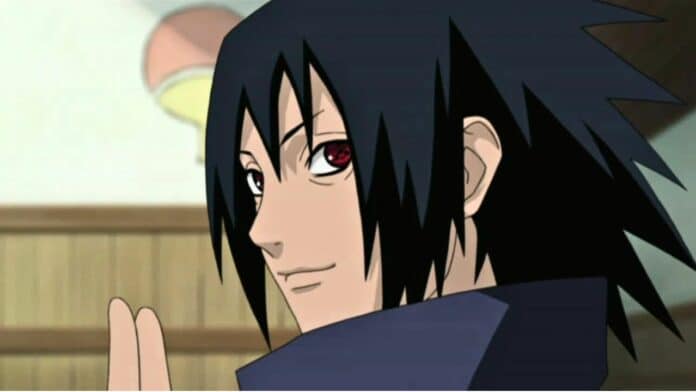In the universe of “Naruto,” created by Masashi Kishimoto, the Uchiha Clan stands out as one of the most prominent and storied clans.
Their complex history is not just a tale of powerful ninjas; it is a narrative rich with symbolism, tragedy, and profound themes that resonate throughout the series.
This article explores the significance of the Uchiha Clan’s history, delving into how it shapes the world of “Naruto” and adds depth to its storytelling.
The Uchiha’s Historical Roots
The Uchiha Clan is known for its prodigious ability in ninja arts, particularly their mastery of the Sharingan, a unique ocular power. Historically, the Uchiha were one of the founding clans of Konohagakure (the Hidden Leaf Village), playing a crucial role in its establishment.
This foundational aspect of the clan’s history underscores their importance in the ninja world and sets the stage for their complex relationship with the village and other clans.
The Sharingan: A Symbol of Power and Burden
The Sharingan is not just a powerful tool; it symbolizes the Uchiha’s strengths and the burdens they carry. The eye’s ability to perceive and copy jutsu, as well as its later evolutions, represent the clan’s depth of skill and understanding of the ninja arts.
However, the Sharingan is also a symbol of the clan’s emotional depth, as it is activated by intense emotional experiences, often linked to loss and suffering.
The Curse of Hatred
One of the most significant aspects of the Uchiha’s history is the so-called ‘Curse of Hatred.’ This curse, a metaphor for the cycle of revenge and violence, is a recurring theme in the Uchiha’s story.
It reflects the clan’s struggles with their own emotions and the devastating consequences when those emotions are left unchecked.
Uchiha and Senju
Hashirama Senju, known as the “God of Shinobi,” was a member of the Senju clan, one of the most powerful clans in the ninja world. He was characterized by his exceptional skills in ninjutsu and his unique ability to use Wood Release techniques.
Hashirama was also the co-founder of the Hidden Leaf Village (Konohagakure) and became its first Hokage. He was known for his strong belief in peace and his desire to end the constant state of warfare between the ninja clans.
Madara Uchiha, on the other hand, was a legendary leader of the Uchiha clan, known for his prowess in battle and his sharingan eyes, which granted him a wide range of powerful abilities.
Madara was a rival and contemporary of Hashirama, and the two shared a complex relationship that oscillated between deep friendship and intense rivalry.
He was a co-founder of the Hidden Leaf Village alongside Hashirama but later became disillusioned with the village’s direction, leading to a falling out between them.
The conflict between Madara and Hashirama is central to the Naruto storyline, representing the broader historical feud between the Uchiha and Senju clans.
Their battle at the Valley of the End, which led to the creation of a massive statue of each warrior, is one of the series’ most iconic moments. Madara’s ideologies and actions, particularly his pursuit of the Eye of the Moon Plan, play a significant role in shaping the events of the series.
The Uchiha Clan Massacre: A Turning Point
The Uchiha Clan Massacre is a pivotal event in “Naruto,” marking a turning point in the series. This tragic event, where Itachi Uchiha kills most of his clan, has far-reaching implications.
It shapes the lives of key characters like Sasuke Uchiha and Itachi himself and highlights the complex web of secrecy, power struggles, and the theme of sacrifice for perceived greater good.
Sasuke’s Journey and the Clan’s Redemption
Sasuke Uchiha’s character arc is deeply intertwined with his clan’s history. His quest for revenge, followed by a path of redemption, is symbolic of the broader narrative of the Uchiha Clan.
Sasuke’s journey from vengeance to understanding and eventually aiming to protect Konohagakure represents a form of redemption for the Uchiha and a break from the cycle of hatred.
The Uchiha’s Role in the Shinobi World
The history of the Uchiha Clan is integral to the world-building in “Naruto.” Their story adds a layer of complexity to the shinobi world, illustrating how history, power, and emotions can shape an entire society.
The legacy of the Uchiha continues to influence the events in the series, long after the clan’s downfall.
The Uchiha Clan’s history in “Naruto” is a tapestry woven with themes of power, tragedy, and redemption. It serves as a microcosm of the larger world of the series, reflecting the complexities of its characters and the shinobi way of life.
Understanding the Uchiha’s history is essential to grasping the full depth of “Naruto’s” narrative, as it provides not just context but a poignant commentary on the cycle of violence and the possibility of breaking it.
Also Read: Exploring legacy and inheritance in Naruto: A journey through generations

